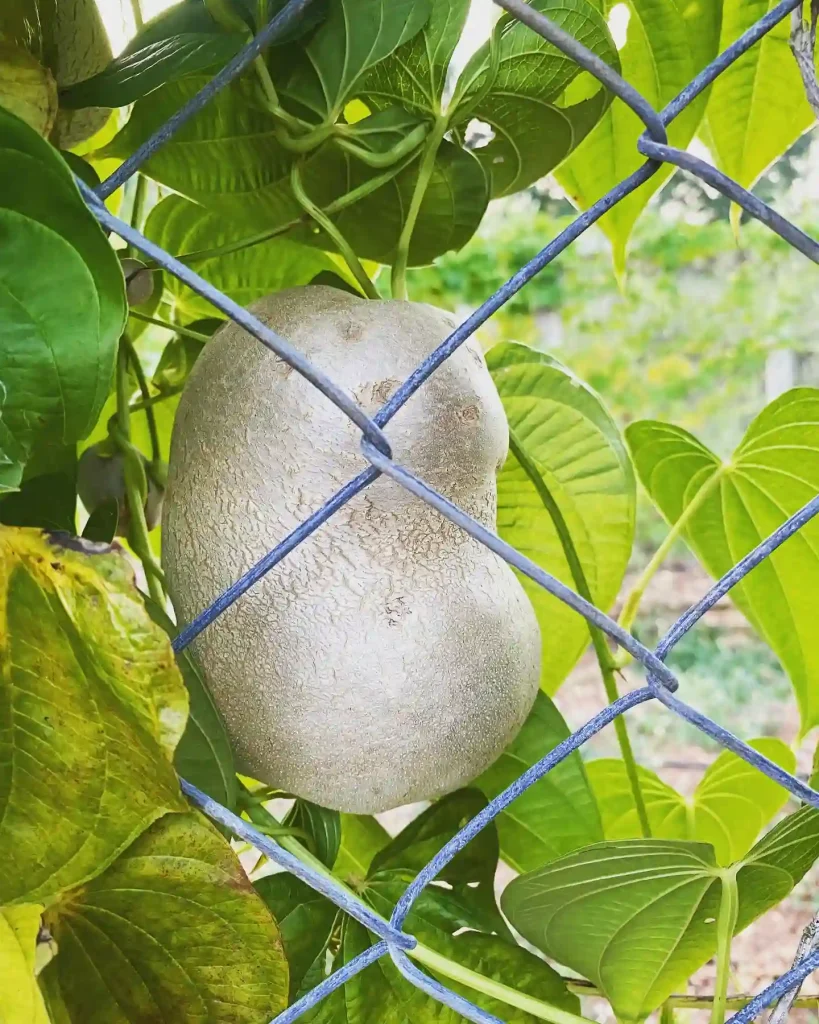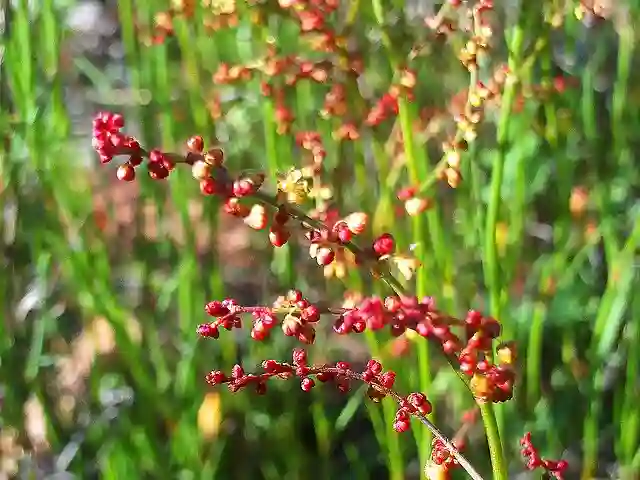
What is centipede grass? What does centipede grass look like?
Centipede grass! That’s the stuff my lawn’s made of. It’s definitely not the prettiest grass out there – it’s more on the coarse side, with a yellowish-green color that some might call dull. But let me tell you, this stuff is a lifesaver for someone like me who isn’t exactly a lawn care enthusiast. It practically takes care of itself! It grows slow and steady, so I don’t have to mow it nearly as often as my neighbors with their Bermuda grass. Plus, it seems happy enough in our slightly acidic soil, which is a good thing because I wouldn’t know the first thing about changing that! Sure, it might not be the lush green carpet you see in magazines, but for a low-maintenance lawn that can handle a bit of neglect, centipede grass gets a thumbs up from me.
How to make centipede grass spread?
Let me tell you, getting my centipede grass to spread has been a bit of a learning experience. It’s not like Bermuda grass that takes over everything! But I have found a few things that seem to help. First of all, forget about using weed killers with pre-emergent properties. Those seem to mess with the stolons, which are those above-ground runners that centipede grass uses to spread.
Instead, I’ve had some luck with what I call “strategic edging.” When I trim the edges of the lawn, I keep an eye out for healthy-looking stolons. These are the long, slender runners with little green shoots on them. Instead of tossing them in the yard waste bin, I carefully take a few and lay them flat on any bare spots in my lawn. Then I gently press a thin layer of soil over them to keep them in place. It might sound silly, but I swear I’ve seen those little stolons take root and start spreading in those bare patches. It’s not a super fast process, but hey, at least it’s free and uses what my lawn is already producing!
When to fertilize centipede grass?
Ah, fertilizing centipede grass – gotta be careful with this one! Unlike some of those high-maintenance lawns, centipede grass is pretty happy being left alone for the most part. In fact, overdoing it on fertilizer can actually hurt it.
I’ve learned the hard way that waiting is key. You definitely don’t want to fertilize too early in the season, because if there’s a surprise frost, that new growth can get damaged. For me, the sweet spot seems to be around mid-May, after the danger of frost has passed and the grass has fully greened up. Some folks like to do a second light application later in the summer, but I usually just stick with the one feeding in early summer. It seems to be enough to keep my lawn healthy without going crazy with growth.
When to plant centipede grass?
Planting centipede grass is all about timing it right to give those seeds the best chance to thrive. In our neck of the woods, waiting until spring has sprung for sure is key. You don’t want to plant them too early when there’s still a chance of frost. The soil needs to be warm and happy, ideally around 70 degrees Fahrenheit or even a tad higher.
For me, May and June seem to be the golden window. Planting any earlier and I’ve ended up with patchy results, with some seeds struggling to germinate in the cooler soil. The later you go in that window, though, the more watering you’ll need to do throughout the hot summer months to keep those new seedlings happy. So, early to mid-spring seems to be the sweet spot for planting centipede grass seeds in my experience.
How to plant centipede grass seed?
Planting centipede grass seed takes a little elbow grease but it’s definitely doable! Here’s what’s worked for me:
First things first, I clear out the area. Rake away any leaves, debris, or leftover dead grass. You want nice, bare soil for the seeds to make contact with. Some folks recommend adding a layer of topsoil, but I’ve gotten by just prepping the existing soil. Next, I loosen up the top inch or two of soil with a rake. This helps the seeds settle in nicely and gives them room to germinate.
Now comes the fun part, well, kind of. Seeding can be a bit tedious, but I find it helps to use a spreader. It lets you distribute the seeds nice and evenly – way easier than trying to do it by hand. Bag instructions will tell you how much seed you need per square footage, but for centipede grass, less is more. You don’t want to crowd the seeds.
After seeding, I rake the area lightly again, just to barely cover the seeds with soil. Here’s the tricky part: watering. You want to keep the soil moist, but not soggy. A gentle stream from the hose on misting setting works well for me. Be patient, germination can take a couple of weeks. In the meantime, keep that soil moist and watch those little green sprouts emerge!
Why is centipede grass seed so expensive?
You’re right, centipede grass seed can definitely sting the wallet compared to some other types of grass. There’s a few things I’ve learned about why it might cost a bit more.
For one, centipede grass isn’t quite as common as some other warm-season grasses. So there’s maybe not the same level of mass production going on, which can drive the price up. Plus, centipede grass seed itself is pretty darn tiny. You need a lot more of it to cover the same area compared to bigger seeds like some fescues. That means more seeds per bag, and probably more bags needed for your lawn project.
Another factor could be that centipede grass is known for being a bit slow to germinate and establish itself. So seed companies might factor that in, knowing you might need to buy more to fill in any patchy areas.
Here’s the thing though: while the upfront cost of seed might be higher, centipede grass makes up for it in the long run. Remember how I mentioned it practically takes care of itself? You don’t need a ton of fertilizer, and mowing is minimal. So in the end, you might actually save money on maintenance compared to a lawn that needs constant coddling.
How to kill centipede grass?
Ugh, centipede grass can be a lifesaver in some ways, but a stubborn pain in others. If you’re looking to kill it off in a particular area, there are a couple ways to go about it, depending on how much patience you have and how eco-friendly you want to be.
The nuke option: If you need fast results and don’t mind using chemicals, a glyphosate-based herbicide like Round-Up will definitely get the job done. Just be warned, this stuff is non-selective, so it’ll kill anything it touches, including any desirable plants you have nearby. You’ll also need to wait a while before planting anything new in the treated area.
The natural approach: This takes more time and effort, but it’s a safer option if you’re worried about harming surrounding plants or pets. One method is to smother the grass with a thick layer of mulch, like cardboard or black plastic. Deprived of sunlight, the centipede grass will eventually die off. Another option is the boiling water method. Just be careful with this one, especially if you have kids or pets around. The idea is to pour boiling water directly on the centipede grass patches. Repeat applications might be needed, and it won’t be the most effective for large areas.
Whichever method you choose, remember centipede grass is known for its tenacity. It might take some persistence to completely eradicate it from an area.
How to make centipede grass thicker?
Getting my centipede grass thicker has been a bit of a journey, but I’ve learned a few tricks that work for my lawn. Here’s what’s helped me achieve a denser, more lush centipede carpet:
Mow strategically: Sure, centipede grass grows slow, but that doesn’t mean you can neglect mowing altogether. Keeping it at the right height, around 2-3 inches, encourages tillering – that’s where the grass sends out new shoots at the base, thickening things up. Letting it get too tall can block sunlight from reaching the lower blades, hindering growth.
Don’t skimp on water: While centipede grass is known for being drought-tolerant, that doesn’t mean it thrives in parched conditions. Deep watering – soaking the soil to a depth of 6-8 inches – encourages those roots to grow deep and strong, leading to a healthier, thicker lawn. However, avoid constant shallow watering, which promotes weak surface roots.
Aerate occasionally: Compacted soil can suffocate the roots of your centipede grass, hindering its growth. Aerating every other year or so helps loosen up the soil, allowing air, water, and nutrients to reach the roots more effectively. There are special aerator tools you can rent, or some folks even use core aerators with shoes attached (think fancy sandals with spikes).
Fertilize, but don’t overdo it: Remember, centipede grass isn’t a high-maintenance kind of guy. Overfertilizing can actually harm it. A light application of fertilizer formulated specifically for centipede grass, once a year in mid-spring, seems to do the trick for me.
Be patient: Thicker centipede grass doesn’t happen overnight. By following these tips consistently, you should gradually see your lawn filling in and reaching its full, dense potential. And hey, the good thing is, once you achieve that thicker lawn, you can enjoy those low-maintenance benefits centipede grass is known for!
Is centipede grass good?
Whether centipede grass is good for you depends on what you’re looking for in a lawn. Here’s the breakdown from my own experience:
Upsides:
- Low-maintenance: This is the biggest win for me. It grows slow, so mowing is minimal. Plus, it doesn’t need a ton of fertilizer and seems happy in my slightly acidic soil, which I wouldn’t know how to change anyway!
- Heat tolerance: We get scorching summers here, and centipede grass handles it like a champ. It doesn’t need constant watering like some other types of grass.
- Decent pest and disease resistance: It’s not immune to everything, but it seems to hold its own against most common lawn threats.
Downsides:
- Not the prettiest: It’s a bit coarse and yellowish-green, not the lush green carpet you see in magazines. But hey, beauty is in the eye of the beholder, right?
- Slow to spread: Don’t expect it to fill in bare patches overnight. You might need to be patient or get your hands dirty with some “strategic edging” like I do.
- Not for high traffic: It can handle occasional use, but if you have kids or pets who are constantly running around, it might not hold up as well as other grass types.
Overall:
For someone like me who prioritizes a low-maintenance lawn that can handle our hot summers, centipede grass is a good fit. I’m willing to sacrifice some lushness for the ease of care. But if you have your heart set on a perfect, green lawn that can withstand heavy traffic, you might want to consider a different type of grass.
What is the best fertilizer for centipede grass?
In my experience, the best fertilizer for centipede grass is one that’s low in nitrogen and phosphorus, and doesn’t contain any weed killers. Here’s the breakdown of what I’ve learned:
- Low Nitrogen: Centipede grass doesn’t need a lot of nitrogen. Too much can lead to a burst of growth that’s susceptible to disease. A fertilizer ratio like 15-0-15, with a low first number (nitrogen), seems to be the sweet spot.
- No Phosphorus: This might surprise you, but centipede grass actually does better without extra phosphorus. In fact, too much phosphorus can mess with the iron levels in the soil, which can make your centipede grass look pale and unhealthy.
- Skip the Weed Killer: Many weed and feed products are a big no-no for centipede grass. They can be too harsh and damage the lawn. Stick with a fertilizer formulated specifically for centipede grass.
Here are a couple of brands that seem to be popular choices for centipede grass lawns:
- Simple Lawn Solutions 15-0-15 Liquid Fertilizer
- Ferti-Lome Centipede Lawn Fertilizer 15-0-15
Remember: Always follow the instructions on the fertilizer bag and don’t overdo it! Centipede grass is happy with a light feeding once a year, usually in mid-spring.
If i die, water my plants!



